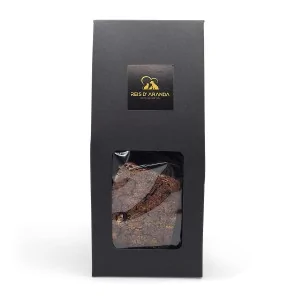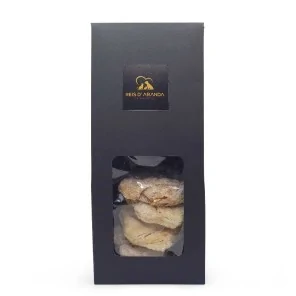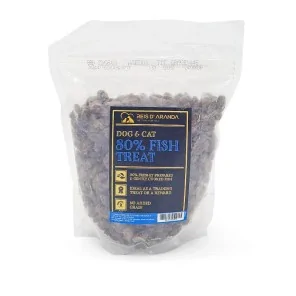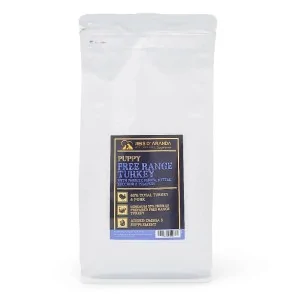The Tornjak originated from genetically homogeneous, almost extinct, indigenous shepherd dogs. These dogs have...
THE BERGAMASCO SHEEPDOG
INTRODUCTION
The Bergamasco Sheepdog is a medium-sized dog characterised by its tousled locks which give it a very dishevelled and friendly appearance; for this reason and because of its good character, it is becoming one of the best companion dogs.
THE HISTORY OF THE BERGAMASCO SHEPHERD DOG
The Bergamo Shepherd Dog is one of the oldest breeds in existence, so it is not surprising that its origins are unknown. However, it is believed that the ancestors of these dogs accompanied various nomadic peoples of Asia, some of whom, over the centuries, came to Europe.
What is certain is that these dogs have long lived in northern Italy, near the Alps, and more specifically in the Lombard city of Bergamo.
They are the traditional working dogs - drivers and protectors of herds - of that area, hence the name Bergamo shepherds or Bergamascans. Representations of the breed in its present form date back to the 16th century.
After a period of decline that almost led to its disappearance, the breed was revived in the 19th century. The Bergamo Shepherd Dog was first officially exhibited at a specialised dog show in Milan in 1881.
WHAT IS THE BERGAMASCO SHEPHERD DOG LIKE?
GENERAL APPEARANCE: The Bergamasco Shepherd Dog is a medium sized dog, rustic in appearance, with a rich coat all over the body, strong but well proportioned. His general appearance is that of a dog of medium proportions whose body tends to be square. It is harmonious, both in size (heterometry = normal relationship between the size and the different parts of the body) and in outline (alloidism = concordance between the outlines of the head and body).
IMPORTANT PROPORTIONS : The length of the trunk, measured from the point of the shoulder (scapular-humeral angle) to the point of the buttock (point of the ischium), is equal to the height at the withers (the body tends to be a square). A small margin of tolerance is allowed, but this should not exceed one or two centimetres.
The length of the head should be 4/10 of the height at the withers. The depth of the chest should reach 50% of the height at the withers.
HEAD : The length of the muzzle is equal to the length of the skull. In its parallelepiped shape the head appears large. The skin should not be thick, but well applied to the underlying tissues, and without forming wrinkles.
CRANIAL REGION : The skull is broad and slightly convex between the ears, it is also broad and rounded in the region of the forehead. The upper longitudinal axes of the skull and muzzle are parallel. The length of the skull is equal to the length of the muzzle. Its width should not exceed half the length of the head. The protuberances of the forehead are developed both longitudinally and transversely; the zygomatic arches are well marked. The mid frontal (or metopic) suture is marked, the occipital protuberance is visible and protruding.
NASO FRONTAL DEPRESSION : Well adjusted, but accentuated by the marked development of the apophysis of the nose and forehead bones, the frontal protuberances and the eyebrows.
FACIAL REGION
HOCICO: Tapering progressively to its end and the lateral sides converging slightly, so that it is not pointed but truncated, with the inner side rather flat. Its length is equal to the length of the skull. Its width, measured at half the length, is about 50% of its length.
The height of the muzzle must not be less than half its length. The upper profile of the muzzle, traced by the profile of the muzzle, is rectilinear.
The lower profile of the muzzle is not determined by the lip but by the jaw. Because of this conformation the corner of the mouth is not downturned; the muzzle is well cleft, so that the corner of the mouth is at the level of an imaginary vertical line drawn from the outer corner of the eye. The profile of the lower jaw is slightly more or less straight.
LIPS: Thin and not very protruding, parted under the bridge of the nose in a very open arch forming a third of a circle; the teeth of the jaw are thus barely covered. The edges of the lips are well pigmented.
JAWS: The body and the lower and upper jaw branches are well developed and broad.
TEETH: White; the dentition is complete and well developed, the incisors are evenly aligned. The articulation is scissor-like.
CHEEKS: Not very prominent.
EYES: Large; the iris is of a rather dark brown colour, in accordance with the colour of the coat. They are set almost on the same frontal plane. The expression is sweet, gentle and attentive. The palpebral aperture is slightly oval and the palpebral axis is approximately 15% oblique to the horizontal. The eyelids are well adapted to the shape of the eyeball and their rims are well pigmented black; the eyebrows are unusually long, so that they can raise the hairs of the forehead which fall in front of the eyes.
EARS: Set on high, semi drooping, i.e. only the terminal thirds to the rounded tip are drooping. When the dog is attentive, the ear is slightly raised at the base. Its shape is triangular. The length of the ear is between 11 and 13 cm, its width is 6.5 to 8 cm. It has a broad base, which at the back extends to the ligament running from the head to the neck, while at the front it reaches the middle of the skull. The tip is slightly rounded. Above the ears the hair is somewhat wavy and soft, while at the tip it ends in a fringe.
NECK: The upper profile is slightly convex. The neck is slightly shorter than the head; in fact, in extension it does not exceed 80% of the length of the head. The circumference of the neck, measured at half its length, should be at least twice its length. The skin must never be flaccid, therefore there must be no trace of dewlap. The coat should be dense.
BODY
TOPLINE: The withers protrude well from the straight dorsal profile. The lumbar region shows a certain convexity and the croup is slightly oblique.
CROSS: High and long. The neck joins harmoniously with the trunk.
BACK: Straight, well muscled and broad, its length reaches about 30% of the height at the withers. The lumbar region is well connected to the topline and the croup. The length of the lumbar region reaches about 20% of the height at the withers, thus it is much shorter than the dorsal region. The width of the lumbar region is more or less equal to its length; the musculature of the whole region is well developed.
Croup: Broad, robust, well muscled and oblique, with a slope of 30% below the horizontal; its transverse width, between the two haunches, should reach 1/7 of the height at the withers.
CHEST: Should be broad, well sprung, reaching down to the level of the elbows. Its girth (measured behind the elbows) exceeds 25% of the height at the withers. Its transverse diameter should reach 30% of the height at the withers. The depth and height of the chest must reach 50% of the height at the withers.
BOTTOM LINE: From the sternum, the lower profile rises very slightly towards the belly, which is therefore not very high. The length of the flanks must correspond to that of the lumbar region, which is short. The depression of the flanks is minimal.
TAIL: Set on at the back third of the croup, thick and strong at the base, tapering progressively towards the end. It is covered with slightly wavy goat hair. Its length reaches between 60% and 65% of the height at the withers.
The tail easily reaches to the hock when the dog is in normal position, but shorter is preferable. When the dog is at rest the tail is sabre-shaped, i.e. drooping in the front third and then rising slightly in the rear third. The dog wags its tail when in motion.
FOREQUARTERS: As a whole, seen from the front and in profile, they are well plumb. The height from ground to elbow is 50% of the height at withers. They are well proportioned to the size of the dog.
Shoulders: Solid and well built. Its length is barely more than a quarter of the height at the withers and measures between 15 and 17 cm. Its obliquity below the horizontal is 45 to 55 degrees. Muscles should always be well developed.
Upper arm: Should be well muscled and well boned. Its length reaches 30% of the height at the withers. Its inclination below the horizontal is between 60 and 70 degrees. The opening of the scapular-humeral angle varies between 105 and 125 degrees.
ELBOW: Should be placed in planes parallel to the median plane of the body. The point of the elbow should be on an imaginary vertical line drawn from the caudal angle of the scapula. The opening of the radial humerus angle varies between 150 and 155 degrees. From the level of the elbows downwards, the coat should be abundant, long and dense, with a tendency to form tufts.
ANEBRAZOS: This is vertical, its length is at least equal to that of the upper arm. Muscles and bones well developed.
Pastern: Extends the vertical line of the forearm. Highly mobile, slender, with a clearly protruding pisciform bone.
Pastern: Should be slender and highly mobile. Seen from the front, it should be situated in the same vertical plane as the forearm. Seen in profile it is slightly oblique at the front.
HAND: Oval in shape (hare foot) with well knit and arched toes. Nails strong, curved and pigmented. The pads of the feet are dark in colour.
HINDQUARTERS: On the whole, thehindquarters are well adapted to the size of the dog. The proportions are normal, both when viewed from the side and from the rear.
Upper thigh: Long, broad, well muscled, with a slightly convex rear edge. Its length exceeds about 30% of the height at the withers and its width 75% of its length. The opening of the coxofemoral angle varies between 100 and 105 degrees.
LEG: Strong boned and finely muscled, the groove of the leg is well marked. The length of the lower thigh is about 1/3 of the height at the withers. Its inclination above the horizontal is about 55 degrees.
KNEES: Well plumb in the line of the limb and turned neither in nor out. The femoral tibial angle is open and measures between 130 and 135 degrees.
Hock: The lateral sides of the hock should be well let down. The distance from the point of the hock to the ground should not be less than 25% of the height at the withers. The opening of the tibiotarsal joint angle varies between 140 and 145 degrees.
METATARSUS: Its length reaches 15% of the height at the withers, if measured separately; if on the other hand it is calculated from the point of the calcaneus, its length is equal to that of the hock. Its direction should be vertical. Any dewclaws should be removed.
FOOT: Must have the same characteristics as the front foot.
GAIT / MOVEMENT: The gait should be agile and long; the trot, rather long and strong, is the preferred movement. Thanks to its conformation, the dog can easily pass into a running gallop, a movement which it is capable of maintaining for a considerable length of time.
SKIN: Must be fine all over, but especially on ears and forelegs, close fitting to the body. The neck should be free from dewlap and the head free from wrinkles. The colour of the mucous membranes and the third eyelid should be black.
COAT: Very abundant, long and of different texture according to the region. Its texture is rough (goat hair) particularly on the front part of the trunk. From the middle of the chest towards the back and on all the limbs, the coat tends to form tufts or is already arranged in tufts according to the age of the dog; these tufts should emerge from the upper part of the dorsal region and fall on the lateral planes of the trunk. On the head the coat is less coarse and covers the eyes. The hair should be evenly distributed over the limbs, forming soft tufts reaching to the ground, resembling a sort of pilaster on the front and tufts on the back, but without forming a fringe. The undercoat is so short that the skin is not easily visible. It should be soft to the touch.
COLOUR: Uniform grey, with grey patches in all possible shades, ranging from delicate and moderate grey, to a lighter or darker shade, up to black. Isabella and light reddish shades are acceptable. A black unicoloured coat is acceptable if it is truly dull (brown). A white unicoloured coat is not permitted. White patches are tolerated when their surface does not exceed one fifth of the total surface of the coat.
SIZE:
HEIGHT AT WITHERS:
- For males the ideal height at withers is 60 cm, with a tolerance of 2 cm more or less.
- For bitches it is 56 cm, with the same tolerance of 2 cm more or less.
WEIGHT:
- Males : 32 to 38 kg.
- Bitches : 26 to 32 kg.
FAULTS: Any departure from the foregoing points should be considered a fault and the seriousness with which the fault should be regarded should be in exact proportion to its degree and its effect upon the health and welfare of the dog.
These rules also apply to dogs with very small heads and to dogs with permanent ambling.
ELIMINATION FAULTS :
- Convergent or divergent craniofacial axes.
- Accentuated or disfiguring prognathism of the jaw. Bilateral strabismus.
- Partial depigmentation of the nose.
- Trumpet shaped tail.
DISQUALIFYING FAULTS:
- Aggressive or fearful dog.
- Total depigmentation of the nose.
- Nose clearly bulging or concave.
- Total bilateral depigmentation of the eyelids.
- Eyes of different colour (even if only one).
- Jaws : prognathism of the upper jaw.
- Absence of tail, brachyurism, tail curling over the back.
- Colour of the coat : white exceeding 1/5 of the total surface. Skin : total depigmentation at the edge of the lips.
Any dog showing clear signs of physical or behavioural abnormalities should be disqualified.
N.B.: Male dogs should have two apparently normal appearing testicles fully descended into the scrotum.
BERGAMESE SHEPHERD DOG HEALTH
To properly care for your Bergamasco Shepherd Dog, puppy or adult, you should take him to the vet as often as necessary for advice on the best specific care to be given to your dog. At Mivet Veterinary Clinics we are experts in all types of dog breeds and we offer our clients an advisory service so that you can rest assured that you are looking after your dog in the best way.
The main care you should take with a Bergamasco shepherd dog is its mane, as brushing will not be enough to keep it in good condition. You will have to separate each of the locks regularly and remove all the dirt you can find, and you will also have to go to a dog groomer's every so often, as his mane continues to grow without limit.
THE PERSONALITY OF THE BERGAMESE SHEPHERD DOG
It is a very intelligent and balanced dog, so you should not have any problems in coexistence if you educate it correctly from puppyhood. He is a very peaceful dog who knows how to play well with other dogs and is attentive to everything that happens around him, even when he seems to be asleep.
The Bergamasco Shepherd is ideal for living with children, as it never shows an aggressive character and is capable of establishing a good friendship with humans, as well as watching over them and protecting them at all times, which is why it has even been used as a therapy dog for children with different abilities.
CONCLUSION
Beyond their appearance, Bergamo sheepdogs stand out, above all, for their exceptional character: they are noble, hard-working, affectionate and very balanced dogs.
Like all working dogs, Bergamo Sheepdogs are happiest when they have a job to do and have an enormous reserve of physical and mental energy which must be properly harnessed.
Leave a comment
Log in to post comments
















